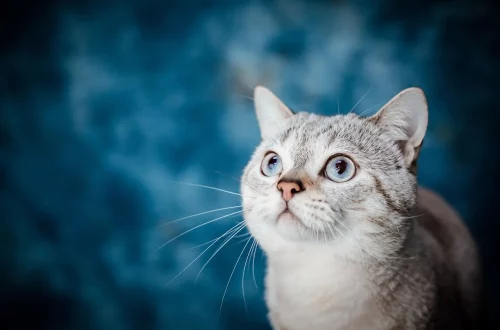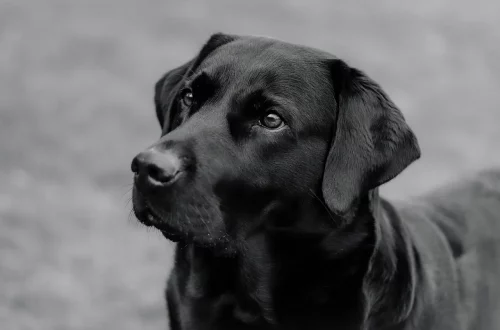
Can Rabbits See in the Dark? Understanding Their Night Vision能力
Rabbits are fascinating creatures that have captured the hearts of many pet owners and nature enthusiasts alike. These small mammals possess a unique set of adaptations that help them thrive in their natural habitats. One of the most intriguing aspects of a rabbit’s biology is its eyesight. Unlike humans, rabbits have a very different visual perception that plays a crucial role in their survival. They are prey animals, and their vision is adapted to detect predators efficiently.
A rabbit’s eyes are positioned on the sides of its head, allowing for a nearly panoramic view of its surroundings. This adaptation is essential for spotting potential threats from various angles while minimizing blind spots. However, this unique eye placement also leads to questions about how well rabbits can see in low-light conditions. Can they navigate effectively in the dark, or do they struggle to find their way? Understanding their night vision capabilities requires a closer look at their anatomy, behavior, and environmental needs.
As we delve deeper into the topic, we will explore the intricacies of rabbit vision, including how their eyes are structured, their ability to see in different light conditions, and the role of their vision in their daily lives.
Eye Structure and Functionality
Rabbits possess a distinct eye structure that plays a pivotal role in their visual perception. Their eyes are large relative to their body size, which allows for a greater capacity to gather light. This adaptation is particularly advantageous for twilight and dawn, times when rabbits are most active. The size and positioning of their eyes enable them to have a wide field of vision, approximately 300 degrees, which is essential for detecting predators.
The retina of a rabbit’s eye contains a high density of rod cells, which are responsible for low-light vision. Rod cells are highly sensitive to light and motion, allowing rabbits to detect movements even in dim lighting. This feature is crucial for their survival, as it helps them identify potential threats and react quickly. Unlike humans, who rely on cone cells for color vision, rabbits have limited ability to perceive colors. Their vision is primarily geared towards detecting movement and distinguishing between light and dark.
In addition to rod cells, rabbits also possess a reflective layer behind their retina known as the tapetum lucidum. This layer enhances their ability to see in low-light conditions by reflecting light back through the retina, giving them a second chance to detect light. This adaptation is common among many nocturnal animals and is a testament to the rabbit’s evolutionary journey as a prey species.
Understanding how rabbits process visual information is also essential. Their brain is wired to prioritize movement detection over detail. This means that while they may not see the world with the same clarity as humans, they excel at noticing changes in their environment, which is vital for their survival.
Behavioral Adaptations to Low Light
Rabbits have evolved not only anatomically but also behaviorally to adapt to their environment, especially in low-light conditions. Their crepuscular nature means they are most active during dawn and dusk. This behavior aligns with their ability to see better during these times, as the lighting conditions are less harsh than midday.
During low-light hours, rabbits engage in various activities that showcase their adaptability. They forage for food, socialize with other rabbits, and engage in playful behaviors. Their ability to navigate their surroundings effectively in the dark is crucial for locating food sources and avoiding predators.
When foraging, rabbits rely heavily on their senses of smell and hearing, in addition to their vision. They have a keen sense of smell that helps them identify edible plants and detect any potential dangers. Their large ears can rotate independently, allowing them to pinpoint sounds from different directions. This multi-sensory approach enables rabbits to thrive even when visibility is limited.
Interestingly, rabbits have also developed specific strategies to enhance their safety during low-light conditions. They often stay close to cover, such as shrubs or tall grass, where they can quickly hide if a predator approaches. This behavior reduces the risk of detection, as the combination of their visual acuity and their instinct to seek shelter provides a robust defense mechanism.
Furthermore, rabbits have a unique way of communicating with each other, particularly during low-light conditions. They use a variety of vocalizations and body language to convey messages, which can be especially important when visibility is compromised. This social behavior helps maintain group cohesion and enhances their chances of survival in a potentially dangerous environment.
The Impact of Environment on Vision
The environment in which rabbits live plays a critical role in their visual capabilities. Wild rabbits inhabit various habitats, including forests, grasslands, and wetlands. Each of these environments presents distinct challenges and adaptations for vision.
In densely vegetated areas, the ability to see in low light becomes even more crucial. The shadows cast by trees and shrubs can create a challenging environment for any animal. Rabbits have adapted to these conditions by relying on their keen eyesight and other senses to navigate. The contrast between light and shadow helps them spot movement and potential threats more effectively.
Conversely, in more open habitats, rabbits may have a clearer line of sight, allowing them to utilize their wide field of vision more effectively. However, this also exposes them to greater risks from aerial predators. In such environments, rabbits often rely on their speed and agility to escape.
Another factor that influences rabbit vision is the time of year. Seasonal changes can impact the availability of light, especially during shorter winter days. During these times, rabbits may adjust their activity patterns, becoming more active during the few hours of daylight available.
Human influence on rabbit habitats also poses challenges. Urban development and agricultural practices can alter their natural environments, impacting their ability to navigate effectively. Loss of cover and increased exposure to light pollution can disrupt their natural behaviors and affect their vision. Understanding these environmental factors is crucial for conserving rabbit populations and their habitats.
Conclusion: Understanding Rabbit Vision
In conclusion, rabbits possess a remarkable set of adaptations that enable them to see and navigate their environments effectively, even in low-light conditions. Their unique eye structure, combined with behavioral adaptations, allows them to thrive as prey animals. While they may not have the same visual clarity as humans, their ability to detect movement and changes in light makes them well-equipped to avoid predators and find food.
Rabbits have evolved a fascinating combination of anatomical and behavioral traits that enhance their survival, demonstrating the intricacies of nature’s design. As we continue to study these remarkable creatures, we gain a deeper understanding of their needs and the importance of preserving their habitats.
Please note that this article is for informational purposes only and should not be considered medical advice. For any health-related concerns, consult a qualified healthcare professional.




